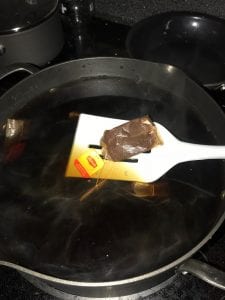How do you as an artist/designer feel that systems thinking and mapping can help you in skillfully and creatively meet the challenges presented by the topics we have covered in class so far? (Sixth Extinction, Great Acceleration, Long Life Design and the Anthropocene).
- We can create models of our assumptions that can be prototyped and adjusted to see how design decisions will come out
- We can see where to fix in order to create improved outcomes — getting the most of our limited resources for improvement.
- We can reveal hidden perspectives behind the outcomes
- We can foresee possible unwanted consequences and prevent them.
- We can witness the journey of the production and appreciate the product and the organization.
Start your research for your Systems Map/Model. Decide on your object and post a list of at least 20 systems you will include in your systems map. These 20 systems should include:
What locations/geographic regions are interconnected through the process of making this object? What materials are synthesized to create it? What different timescales are interconnected through its production? What feedback loops and causality does its existence create for humans, air and water systems? What new systems might emerge from this object’s interaction with others systems over time? Which systems might be affected by the Anthropocene/climate change?
I’m going to analyze the production of coffee and examine the journey of a coffee bean to the cup. I’m going to look at its process from cultivation to consumption, to learn about how coffee is grown , processed, milled and roasted. Caffeine is associated with some cancer, high blood pressure and osteoporosis; but at the same time caffeine is needed by people since it relives pain increases concentration, boosts energy and stop migraines. Moreover, caffeine production may have an harmful impact on environment. Since exposure to more sunlight increases yields, this method has a number of ecologically destructive features.Sun cultivation removes all other species to provide unmitigated access to sunlight and easier harvesting. Eventually, sun cultivation contributes to deforestation, erosion, and it causes many other serious environmental issues. Additionally, another environmental concern with coffee is water use. Coffee growing and production requires immense quantities of water. A recent study estimated that it requires 140 liters of water to grow, process, and prepare a single cup of coffee. ‘
Due to the increasing demand for coffee, coffee production has increased and the way it is grown has changed over time to produce more. Increase in ecological footprint (human impact) may affect the future of our ecosystem.
Post a works-in-process image of your kombucha leather. How is the project going? Do you see growth? Please note, if you don’t see growth, check out a heat mat from the Making Center or move your project to a warmer location.
I haven’t seen growth yet, for that I’ve just checked out a heat mat from the making center, I hope it will work….





Comments